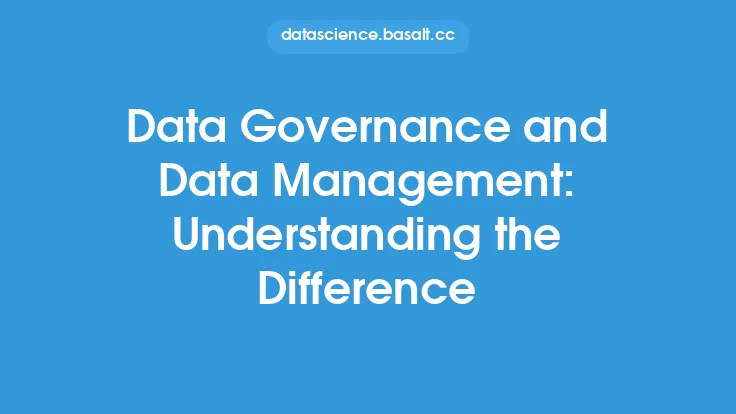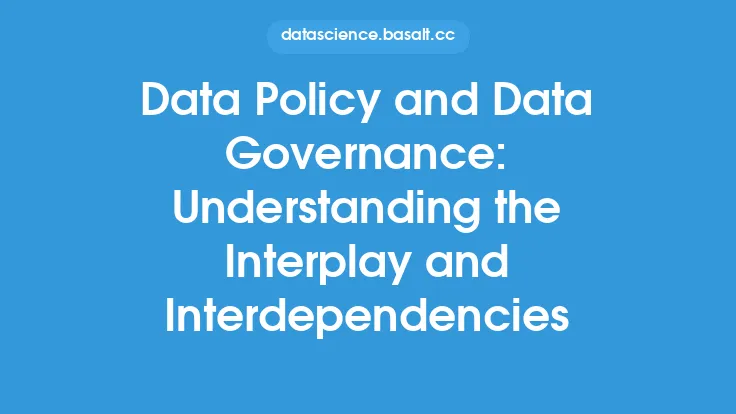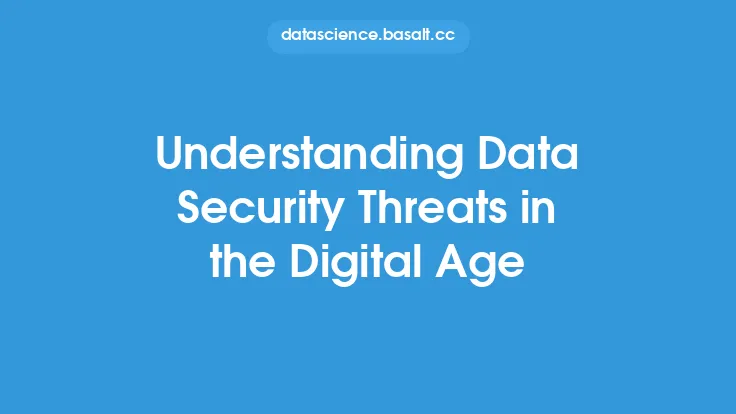Data integrity and data security are two interconnected concepts that play a crucial role in ensuring the reliability and trustworthiness of data. While they are often used interchangeably, they have distinct meanings and implications. Data integrity refers to the accuracy, completeness, and consistency of data, whereas data security refers to the protection of data from unauthorized access, use, disclosure, disruption, modification, or destruction. In this article, we will delve into the connection between data integrity and data security, exploring how they are intertwined and why they are essential for maintaining high-quality data.
Introduction to Data Integrity
Data integrity is a critical aspect of data quality that ensures data is accurate, complete, and consistent throughout its lifecycle. It involves implementing controls and procedures to prevent data from being modified, deleted, or corrupted, either intentionally or unintentionally. Data integrity is essential because it directly impacts the reliability and trustworthiness of data, which in turn affects the decisions made based on that data. There are several types of data integrity, including entity integrity, referential integrity, and domain integrity. Entity integrity ensures that each row in a database table is unique, referential integrity ensures that relationships between tables are maintained, and domain integrity ensures that data conforms to specific formats and ranges.
Introduction to Data Security
Data security, on the other hand, refers to the measures taken to protect data from unauthorized access, use, disclosure, disruption, modification, or destruction. It involves implementing physical, technical, and administrative controls to safeguard data against various threats, including hacking, phishing, and malware attacks. Data security is essential because it protects sensitive information from being compromised, which can have severe consequences, including financial loss, reputational damage, and legal liability. There are several types of data security, including network security, application security, and data encryption. Network security ensures that data is protected while it is being transmitted over networks, application security ensures that software applications are secure, and data encryption ensures that data is protected while it is being stored or transmitted.
The Connection Between Data Integrity and Data Security
The connection between data integrity and data security is intricate and interdependent. Data integrity ensures that data is accurate, complete, and consistent, while data security ensures that data is protected from unauthorized access, use, disclosure, disruption, modification, or destruction. If data is not secure, its integrity can be compromised, and if data integrity is compromised, its security can be at risk. For example, if a database is not properly secured, an unauthorized user can modify or delete data, compromising its integrity. Similarly, if data is not properly validated and verified, it can be corrupted or modified, compromising its security. Therefore, it is essential to implement both data integrity and data security measures to ensure the reliability and trustworthiness of data.
Technical Controls for Data Integrity and Data Security
There are several technical controls that can be implemented to ensure data integrity and data security. These include access controls, authentication and authorization mechanisms, data encryption, firewalls, and intrusion detection systems. Access controls ensure that only authorized users can access and modify data, while authentication and authorization mechanisms ensure that users are who they claim to be and have the necessary permissions to access and modify data. Data encryption ensures that data is protected while it is being stored or transmitted, while firewalls and intrusion detection systems prevent unauthorized access to data. Additionally, technical controls such as checksums, digital signatures, and message authentication codes can be used to ensure data integrity and authenticity.
Administrative Controls for Data Integrity and Data Security
In addition to technical controls, administrative controls are also essential for ensuring data integrity and data security. These include policies, procedures, and standards that govern the management and protection of data. Administrative controls ensure that data is handled and protected consistently throughout its lifecycle, from creation to disposal. They also ensure that users are aware of their responsibilities and obligations regarding data protection and management. Examples of administrative controls include data classification policies, data retention and disposal policies, and incident response plans. Data classification policies ensure that data is properly classified and labeled, while data retention and disposal policies ensure that data is properly stored and disposed of. Incident response plans ensure that organizations are prepared to respond to data breaches and other security incidents.
Physical Controls for Data Integrity and Data Security
Physical controls are also essential for ensuring data integrity and data security. These include measures that protect data from physical threats, such as theft, damage, or destruction. Physical controls ensure that data is stored and processed in a secure environment, protected from unauthorized access and other physical threats. Examples of physical controls include secure data centers, locked cabinets, and surveillance cameras. Secure data centers ensure that data is stored and processed in a secure and climate-controlled environment, while locked cabinets and surveillance cameras prevent unauthorized access to data.
Best Practices for Ensuring Data Integrity and Data Security
To ensure data integrity and data security, organizations should implement best practices that include regular data backups, data validation and verification, and security audits and risk assessments. Regular data backups ensure that data can be recovered in case of a disaster or data loss, while data validation and verification ensure that data is accurate and complete. Security audits and risk assessments ensure that organizations are aware of potential security threats and vulnerabilities, and can take steps to mitigate them. Additionally, organizations should implement incident response plans, provide training and awareness programs for users, and continuously monitor and evaluate their data integrity and data security controls.
Conclusion
In conclusion, data integrity and data security are interconnected concepts that play a crucial role in ensuring the reliability and trustworthiness of data. While they have distinct meanings and implications, they are essential for maintaining high-quality data. By implementing technical, administrative, and physical controls, organizations can ensure the integrity and security of their data, protecting it from unauthorized access, use, disclosure, disruption, modification, or destruction. By following best practices and continuously monitoring and evaluating their data integrity and data security controls, organizations can ensure the accuracy, completeness, and consistency of their data, and make informed decisions based on reliable and trustworthy information.




